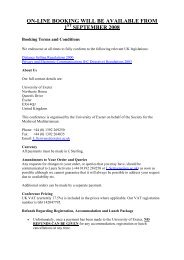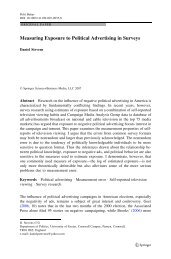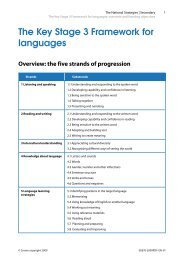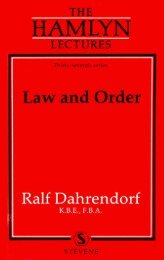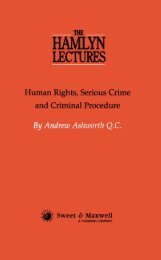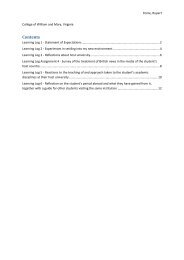Blackstone's Tower: The English Law School - College of Social ...
Blackstone's Tower: The English Law School - College of Social ...
Blackstone's Tower: The English Law School - College of Social ...
You also want an ePaper? Increase the reach of your titles
YUMPU automatically turns print PDFs into web optimized ePapers that Google loves.
<strong>The</strong> <strong>Law</strong> Library<br />
written by practitioners and judges. During the nineteenth and<br />
early twentieth century many legal authors were part-time teachers,<br />
with a foot in both camps. Since the Second World War the balance<br />
has shifted: some <strong>of</strong> the leading practitioners' treatises have<br />
been taken over by academic lawyers or by combined teams <strong>of</strong><br />
academics and practitioners. 57 In recent years there has been a<br />
growing divide between practitioners' treatises and student works<br />
and academics tend to monopolise the latter. Nevertheless, practitioners<br />
and judges continue to make substantial contributions to<br />
legal scholarship. That is one reason why the word "jurist" transcends<br />
the academic-practical divide.<br />
A third, related point, concerns the economics <strong>of</strong> publishing,<br />
which had some important consequences for legal scholarship.<br />
Until about 1960, commercial law publishing in England was dominated<br />
by two specialist publishers, Butterworths and Sweet and<br />
Maxwell. This had pr<strong>of</strong>ound effects on the form, style and content<br />
<strong>of</strong> law books and, above all, on what did and did not get published.<br />
For example, those books that were published were pr<strong>of</strong>essionally<br />
edited, efficiently distributed, and usually had an assured market,<br />
for a fair number <strong>of</strong> books were bought by both students and practitioners.<br />
However, the leading law publishers had firm, rigid, and<br />
very narrow ideas about what did and what did not constitute a<br />
law book. <strong>Law</strong> books were essentially expository works, ranging<br />
from practitioners' treatises down through student textbooks to<br />
"nutshells" and other cram books for examinations that were largely<br />
tests <strong>of</strong> memory. <strong>The</strong>re were few outlets for legal scholars who<br />
wished to write books that did not fit this rigid mould. Furthermore,<br />
the specialist law publishers concentrated on the legal market,<br />
which consisted mainly <strong>of</strong> three main categories: practitioners, students,<br />
and law libraries. Publishers, booksellers, authors and purchasers<br />
were caught in a self-renewing straitjacket.<br />
From the late 1960s this situation began to change. It is not possible<br />
here to enter into the complexities <strong>of</strong> the story. In 1977 a<br />
report on academic law publishing listed over 20 publishers with<br />
law lists; most <strong>of</strong> those had entered the field quite recently. 58 <strong>The</strong><br />
trend has continued. Butterworths and Sweet and Maxwell still<br />
command a large share <strong>of</strong> the market, but they now face strong<br />
competition, in both academic and practitioner markets, and they<br />
have themselves broadened their range. 59<br />
A fourth point about academic law libraries is what they do not<br />
include. <strong>The</strong> content <strong>of</strong> a university library is closely related to<br />
what is taught. Purchasing policies naturally give priority to the<br />
114




